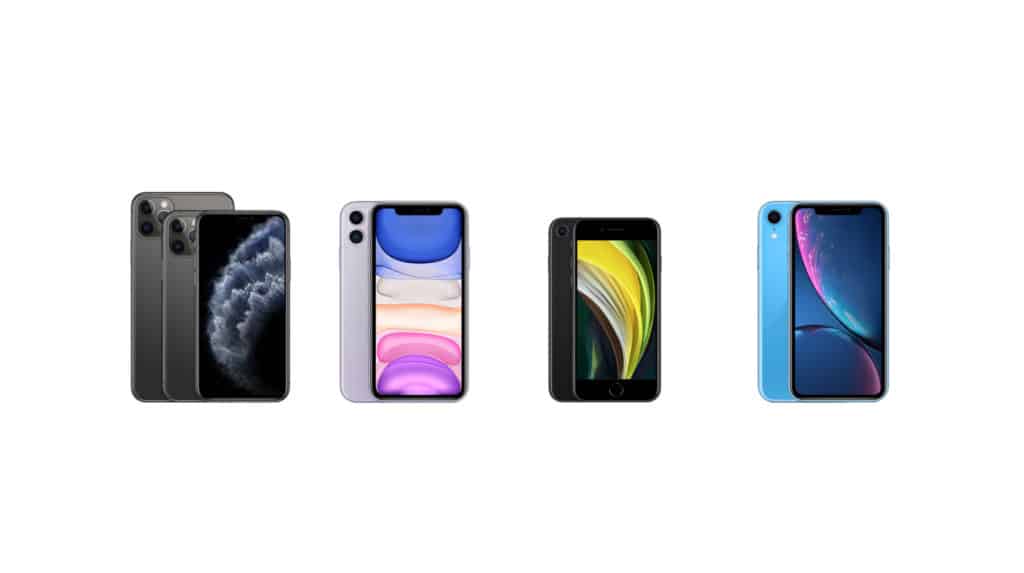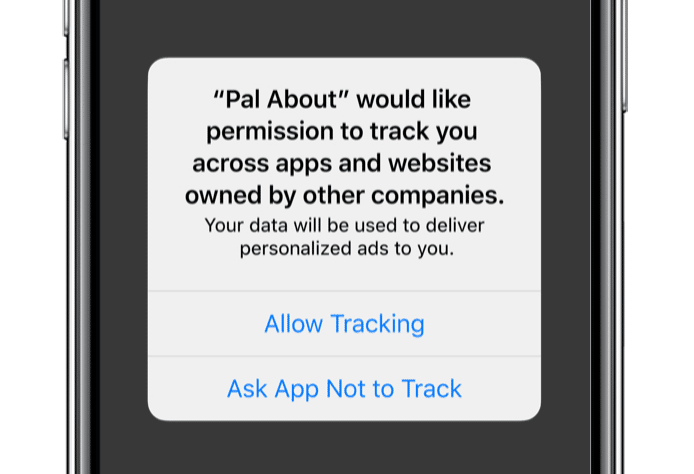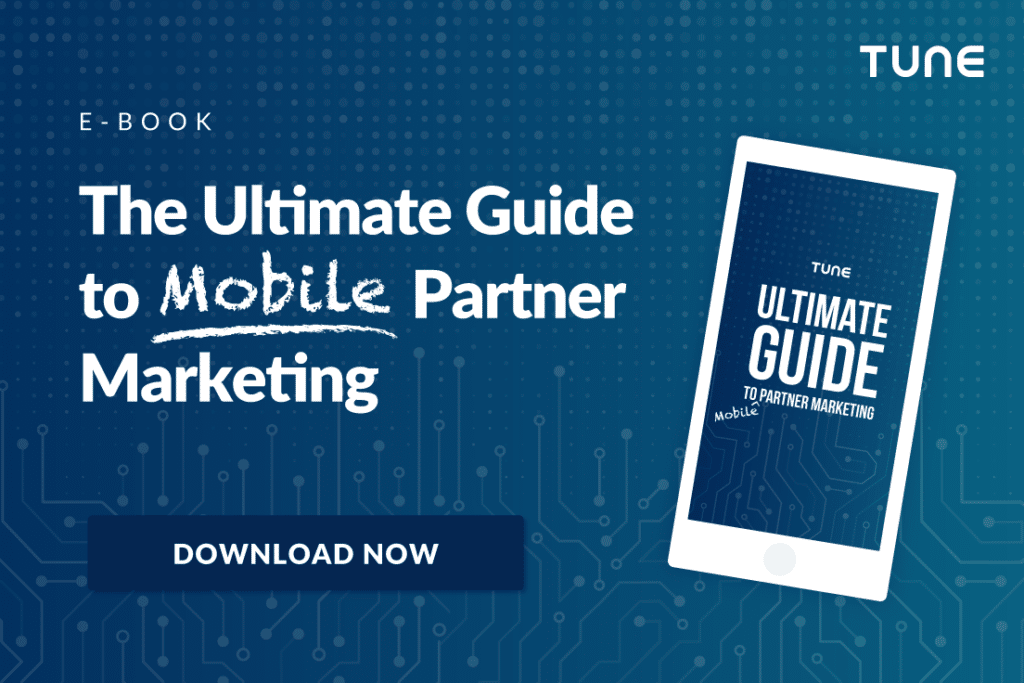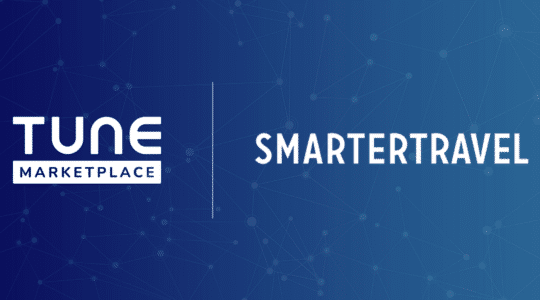
March 2021 update: Apple has finally pushed iOS version 14.5 after postponing the update in September 2020.
Did you feel that? Apple just shook the foundation of the digital marketing industry — again.
In June, Apple announced at WWDC that the next version of iOS would make the IDFA (Identifier for Advertisers) opt-in for all apps. Starting in September, iOS 14 will require every app to get explicit permission from the user before tracking them or accessing their device’s advertising identifier. In other words? Big changes are coming to the mobile ecosystem. Here’s what you need to know.
iOS 14 Will Make App Tracking Opt-In
Apple users who upgrade to iOS 14 later this year will notice a new pop-up when they open an app for the first time. This is the new IDFA opt-in prompt, and it’s the most significant change separating iOS 14 from its predecessors. Here’s what it looks like:

The new prompt is part of Apple’s AppTrackingTransparency framework, and is required for every app that wants to access a user’s device IDFA to track them. The pop-up will be shown on a per-app basis to users who have not already enabled Limit Ad Tracking (LAT) on their phone. When a user does not give consent to be tracked, the user’s IDFA will appear as all zeros, and the requesting app will not be allowed to track them.
If that just sounds like an app-specific version of Limit Ad Tracking, it’s because it is. But there is one big difference between this pop-up and the LAT feature: visibility.
LAT is a device-level setting, but it’s buried deep in the iOS settings menu. It’s hard to find, which is likely the reason only 30% of Apple users have it turned on. The new pop-up, however, will be unmissable — and that’s the point.
Privacy by Design
Making it easier to see and control what companies are tracking you and why is a definite win for consumer privacy. Given Apple’s steady progress toward greater protections for data security and privacy, this move was a natural next step.
It’s also a strong signal to marketers of where the rest of the industry is heading. iOS 14 represents the beginning of a paradigm shift for mobile marketing, because where Apple goes, Google and others follow:
- Apple introduced Limit Ad Tracking (LAT) in 2012; Google introduced similar tools in 2013
- Apple introduced Intelligent Tracking Prevention (ITP) in 2017; Mozilla announced similar anti-tracking measures in 2018, followed by Google in 2019
- Apple introduced default third-party cookie blocking in March 2020; Google is following in 2022
It’s possible that Google breaks tradition and chooses not to follow Apple with something similar for Android’s version of the IDFA, the Google Advertising ID (GAID or AAID), but experts are betting otherwise.
How the Mobile Attribution Industry Is Responding
Mobile attribution companies have chimed in across the ecosystem, and with mixed reactions. Across the board, one thing is clear: everyone wants more clarity from Apple on exactly how mobile marketing will work in iOS 14.
Here are some of the major industry players and their responses:
Adjust
- An update on Apple’s user privacy changes
- Granular attribution compatible with iOS 14: The Attribution Hash
AppsFlyer
Branch
Kochava
Singular
- Singular announces first-to-market SKAdNetwork support to replace the IDFA
- IDFA iOS 14 FAQ: What’s true, what’s fake, and what’s total fantasy
There’s a lot of noise out there about what this really means for mobile marketing. If you assume that only Apple really knows, then it’s time to take a look at SKAdNetwork, Apple’s proposed solution.
SKAdNetwork is an iOS install attribution API originally released in 2018 and updated for iOS 14. According to Apple’s developer site:
“SKAdNetwork allows registered advertising networks to attribute app installations to a particular campaign by receiving a signed signal from Apple. This enables them to verify how many installations occurred from an advertisement and measure which campaigns are most effective while maintaining user privacy. Beginning this fall, advertising networks using SKAdNetwork will have access to Source App information, which identifies the specific app from which an installation occurred. This allows advertising networks who run advertisements on apps they don’t own to identify which app should be credited with initiating the download. SKAdNetwork will also identify re-downloads, which helps advertising networks measure the success of re-engagement campaigns.”
What this means in a nutshell: Apple has decided to facilitate the attribution process at the operating system level to ensure that consumer privacy is protected to its standards. And in doing so, the company is eliminating most of the granularity that mobile marketers have come to expect in their data. (Singular has a good breakdown of it here.)
At least, that’s what people think. Right now, there are still more questions than answers when it comes to iOS 14, SKAdNetwork, and the future of marketing on Apple devices.
What Mobile Marketers Should Do Now
If you’re an advertiser who uses a mobile measurement partner, you’re in good hands. Across the board, MMPs are aware of the potential and wide-ranging effects iOS 14 will have on mobile marketing, and they’re working to address that new reality ahead of the September 2020 release. Adjust, for example, has already suggested a solution that uses an “attribution hash,” and Singular has announced SKAdNetwork support. However they end up doing it, MMPs are still working to provide well-attributed data.
Right now, the best defense is a strong offense. Make sure your tracking methods and solutions are solid across the board. Work closely with your MMPs, partner management platforms, and other partners to communicate steps you’re taking to prepare. And keep up with the news, both from Apple and experts in the industry. Because until Apple releases more information, this is about all you can do. Time to hurry up and wait.
To learn more about working with MMPs and different tracking methods, download The Ultimate Guide to Mobile Partner Marketing.
Author
Becky is the Senior Content Marketing Manager at TUNE. Before TUNE, she handled content strategy and marketing communications at several tech startups in the Bay Area. Becky received her bachelor's degree in English from Wake Forest University. After a decade in San Francisco and Seattle, she has returned home to Charleston, SC, where you can find her strolling through Hampton Park with her pup and enjoying the simple things between adventures with friends and family.





Leave a Reply
You must be logged in to post a comment.